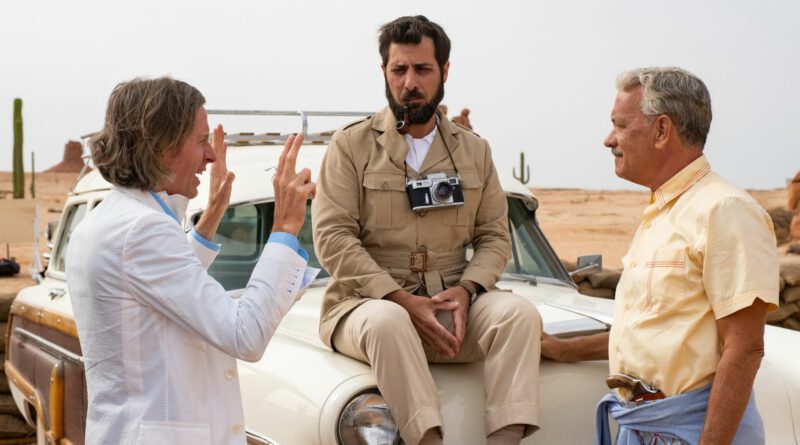‘Asteroid City’: What Wes Anderson’s framing device is all about
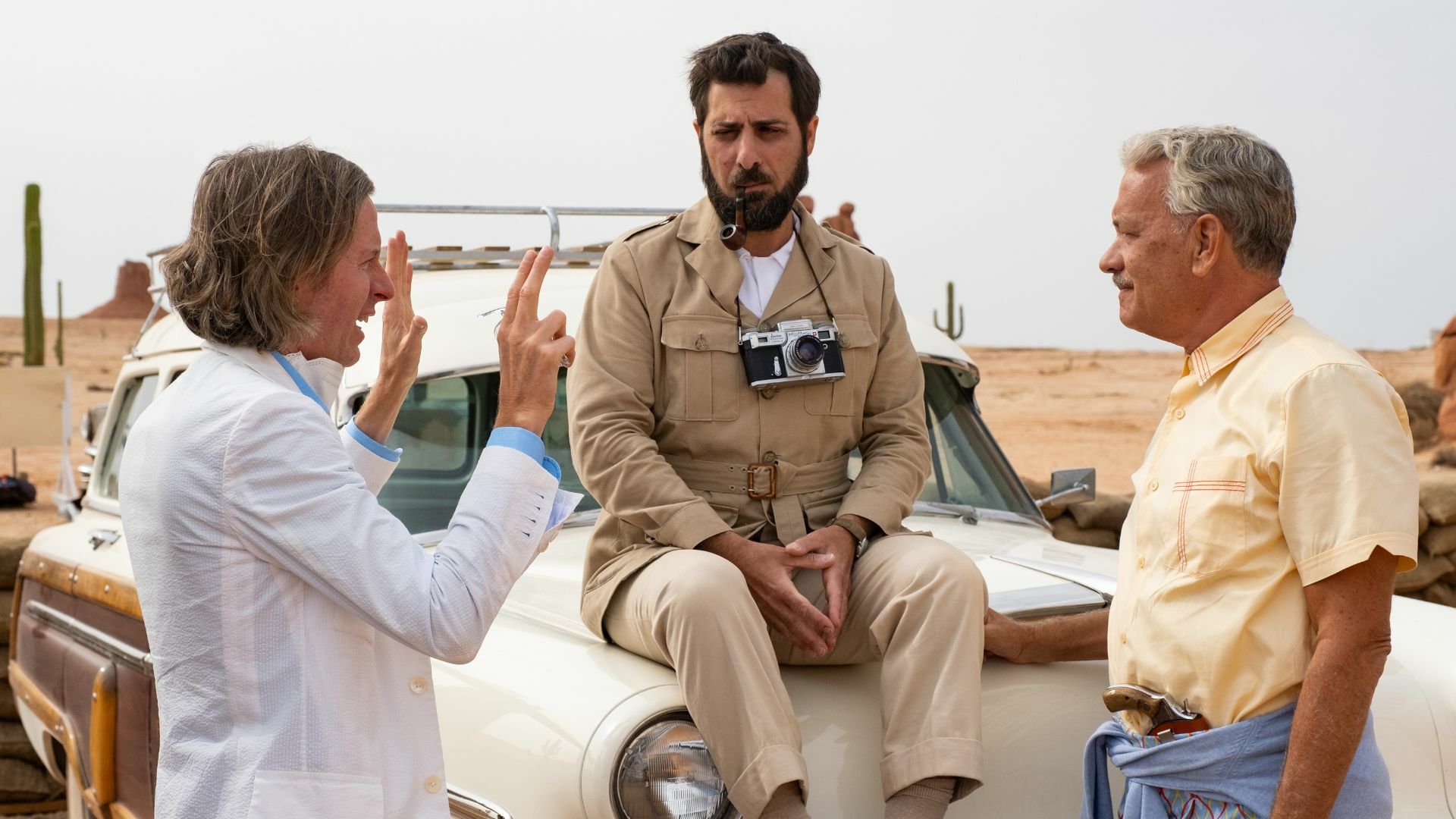
On its surface, Wes Anderson’s Asteroid City is a movie about a recent widower, Augie Steenbeck (Jason Schwartzman), and his four children coming to terms with their intimate and personal grief here on Earth after the death of his wife and their mother. They will have some adventures, and they will meet a lot of folks along the way, up to and including a real-life space alien, animated with stop-motion precision. But what it comes down to is just five small, sad stargazers set under a strange and indifferent interstellar cosmos in the middle of the desert, finding each other again.
Despite long-standing claims that Anderson is a superficial stylist, nothing about Asteroid City is just surface level. Its structure, intricate and often bewildering, is matryoshka-like in its construction. It feverishly makes meaning from itself, laying the railroad tracks before us for every foot we travel forward. Asteroid City is Wes Anderson’s Synecdoche, New York, where layer upon layer upon layer of unreality are piled up until we’re kissing the stars themselves.
The creation of Asteroid City is the creation of Asteroid City.
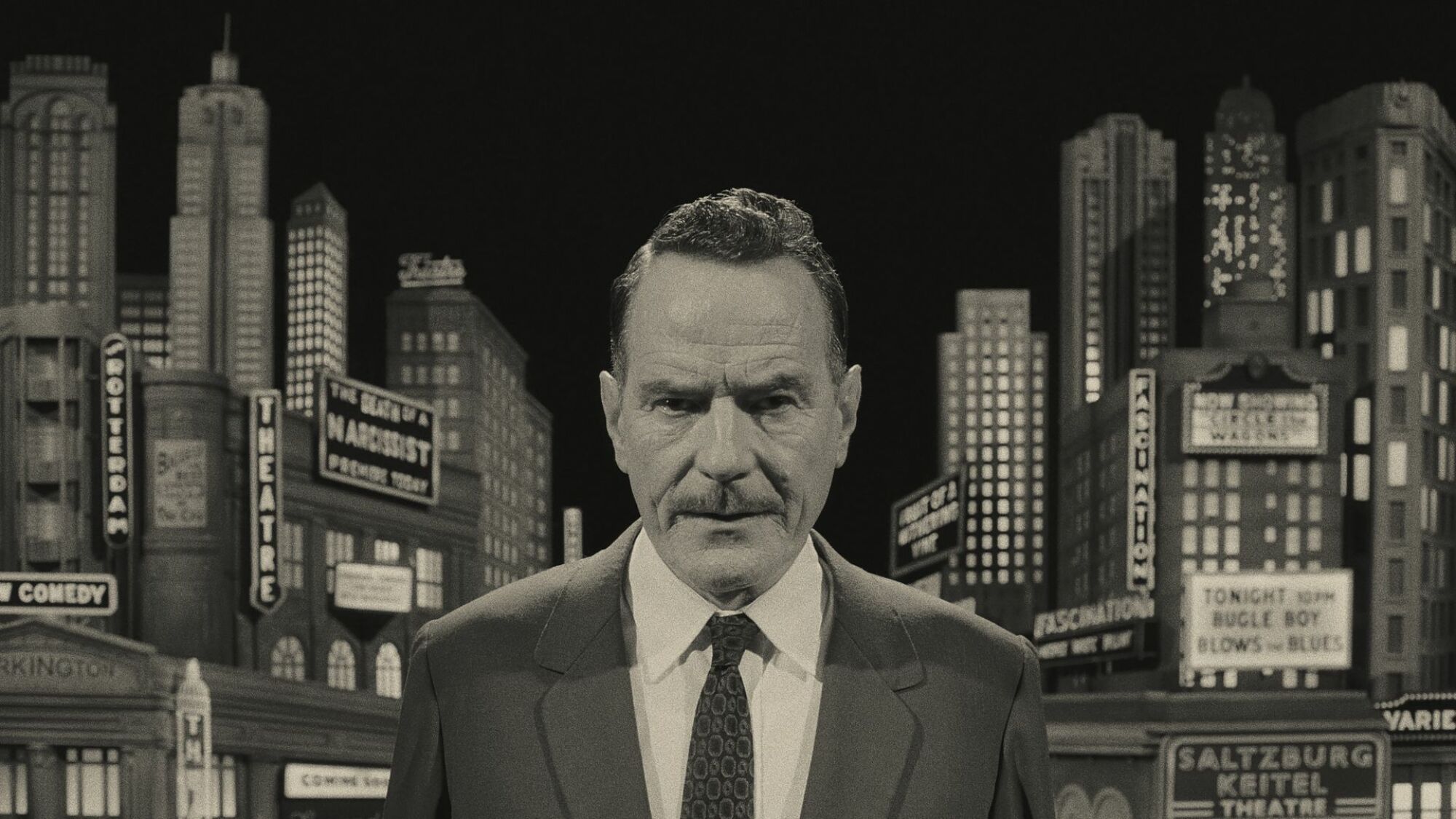
Within the film, Asteroid City is a play that was written by a playwright named Conrad Earp (Edward Norton). A play that was named, after some back and forth, for the town where it’s set.
However, in the film’s opening moments, set in a black-and-white television studio, Bryan Cranston simply declares that “Asteroid City does not exist.” Does he mean the play the movie is named for? Or the city the play is named for? It’s one of the first mysteries the film sets up.
It’s true that no fiction literally exists except through the willful imagination on the part of the creator and those consuming the creation. We make a pact together called “suspension of disbelief” when we sit down to watch any kind of entertainment. But in the world of the film Asteroid City, we quickly find out this introductory statement is true literally as well as more metaphorically, perhaps.
Earp created the town of Asteroid City as well as a play called Asteroid City, which is about the town. It’s a real chicken-versus-egg conundrum of which came first, the setting or the story. And that’s one that Wes Anderson will willfully unravel, strand by strand, as we go along. (The fact that the film is also called Asteroid City aids extensively in this purposeful confusion.)
One step even further removed, the making of the play is being filmed for television. And this is where Bryan Cranston comes in as our host. Rocking a crisp suit and a killer mustache, he stands center stage and welcomes us to watch this broadcast about the making of the play Asteroid City. We move in alongside Cranston onto a set, its edges visible like a theatrical stage, as Norton’s Conrad Earp sits at his typewriter and types. We watch Earp meet with actors that will be cast in scenes, all of which play out like miniature stage vignettes.
And Anderson will cut back to Cranston and this black-and-white TV world intermittently throughout the film to learn tidbits about the play as it’s being readied for production – a sort of mid-century VH1 Pop-Up Video. One that sometimes, as Anderson continues to diabolically unravel this unreality of his own making, begins to disrupt the play itself. Characters begin stepping in and out of the play into the TV world, and vice versa.
Confusing things further, Asteroid City the play – which is Augie Steenbeck’s story of grief and alien encounters in the desert – is filmed in vivid Kodachrome color. It comes across as far more realistic than anything we see in the black-and-white “real world” where Bryan Cranston’s character resides. A real tip of the hat to The Wizard of Oz here, as the audience connects more to the fantasy than we do to the reality; Asteroid City, the fictional town in a play that’s being filmed for television, feels realer than does anything else in Asteroid City the film. The characters of Augie and his kids and his father-in-law Stanley (Tom Hanks) and the movie star Midge Campbell (Scarlett Johansson) that he gingerly romances – these are the relationships in which the film urges us to invest.
Compare the sad and touching conversations between Augie and Midge with the one in the “real world” of the play’s making, where we see a marital drama unfold between a stage director (Adrien Brody) and his estranged wife (Hong Chao). The latter all takes place in the theater’s backstage and is shot explicitly as a stagey filmed play. The walls are bare wood walls, and Brody mimes punching a punching bag even when there is an actual punching bag five feet to his right. It’s all flat and absurd.
But Augie and Stanley and Midge all exist in a world that, as Wes Anderson-fancified up as it might be, feels far more authentic in the experience of it. There is dirt on their shoes and sweat on their brows and color in their cheeks. It’s a magnificent sleight of hand that comes straight at the critical accusations that the hyper-stylization of Wes Anderson films distance us from his characters. “You wanna see distance? I will show you distance,” Anderson seems to be saying.
Wes Anderson wants us to give ourselves over to the magic.
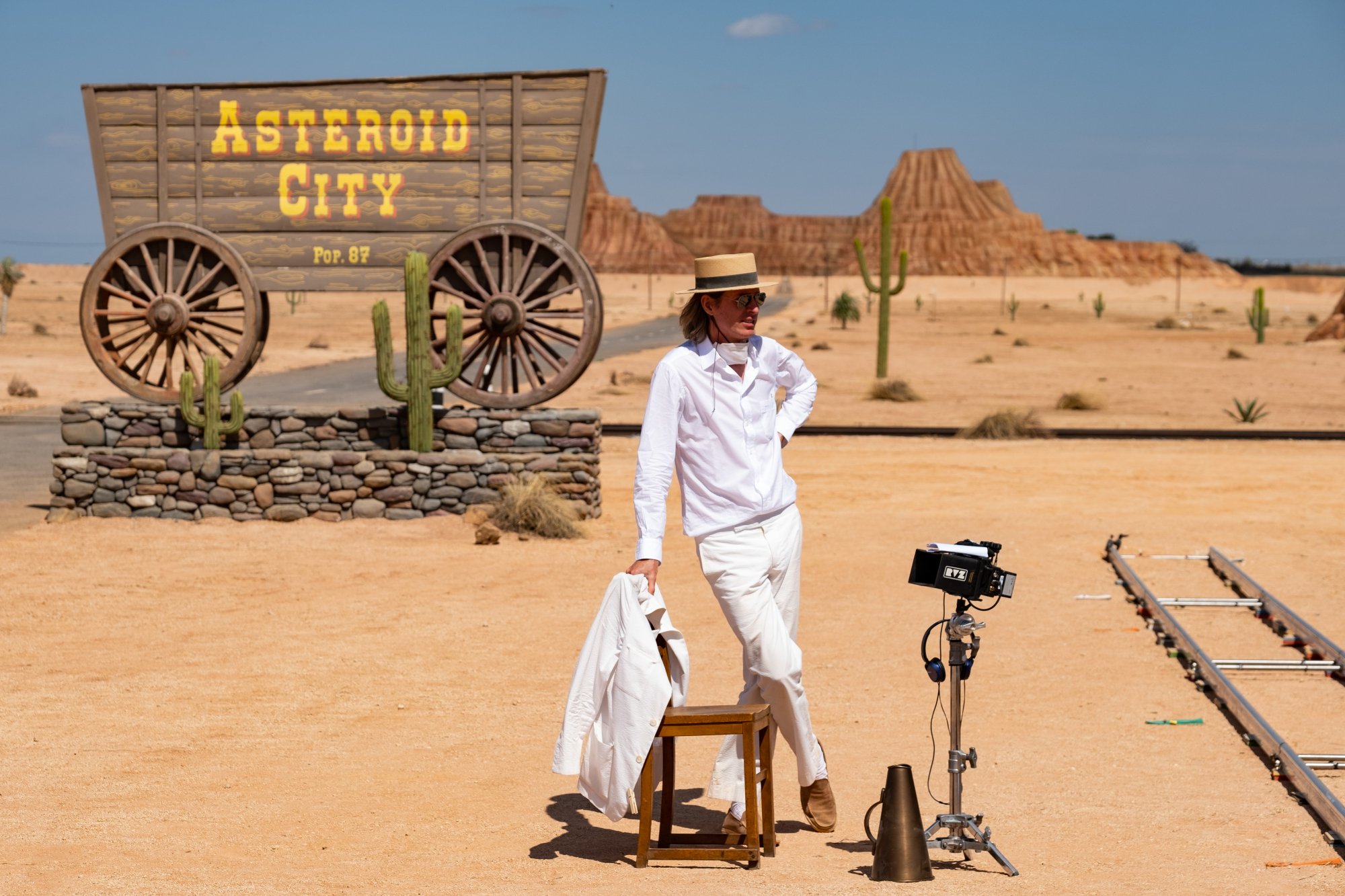
And yet a gigantic question lurks on Asteroid City’s outskirts – what the heck exactly are we seeing?
The colorful world of the play can’t possibly be what’s being broadcast on Bryan Cranston’s black-and-white television program. Playwright Conrad Earp stands on the play’s stage and points at the flat, painted backdrops of the desert canyons and scenery that will, once we move inside the play itself, spring to vivid, three-dimensional life.
That tension, Wes Anderson seems to be saying, is the magic itself. The trickery, where fiction overwhelms our senses and becomes our everything. It’s that pact we make with the storyteller. We’re the people of Bedford Falls clapping for an angel to get its wings every time we sit down to watch a movie; we want to believe a man can fly, that the impossible is made possible if we just close our eyes and wish hard enough on that star.
We are the Junior Stargazers putting cardboard boxes on our heads and peeping through pinholes in order to see three impossible points of light that have traveled billions of years to find us. We want to believe in something, anything, angels or aliens – just so long as there’s something outside of ourselves. Even if only a backstage, a Truman Show toppling-down of the walls around us.
Augie Steenbeck, war photographer, holding his dead wife’s ashes in a blue Tupperware container, keeps bringing up his disbelief in an afterlife. But we watch him develop his pictures several times: flat rectangles of blank, white nothing that suddenly spring to gorgeous life, revealing atom bombs and half-naked actresses reaching for a smoke. Moments from the past, captured. Living on forever. Is that not an afterlife right at our fingertips?
Midge tells Augie that they are “two catastrophically wounded people who don’t express the depths of our pain because we don’t want to.” And yet she paints her face with stage make-up to resemble a bruise, all the better to express the inner turmoil of the character she’s playing. Meaning the character she is playing in a movie within the play within the TV show within the movie, of course.
Welcome to the Grand Wes Anderson Multiverse Theory.
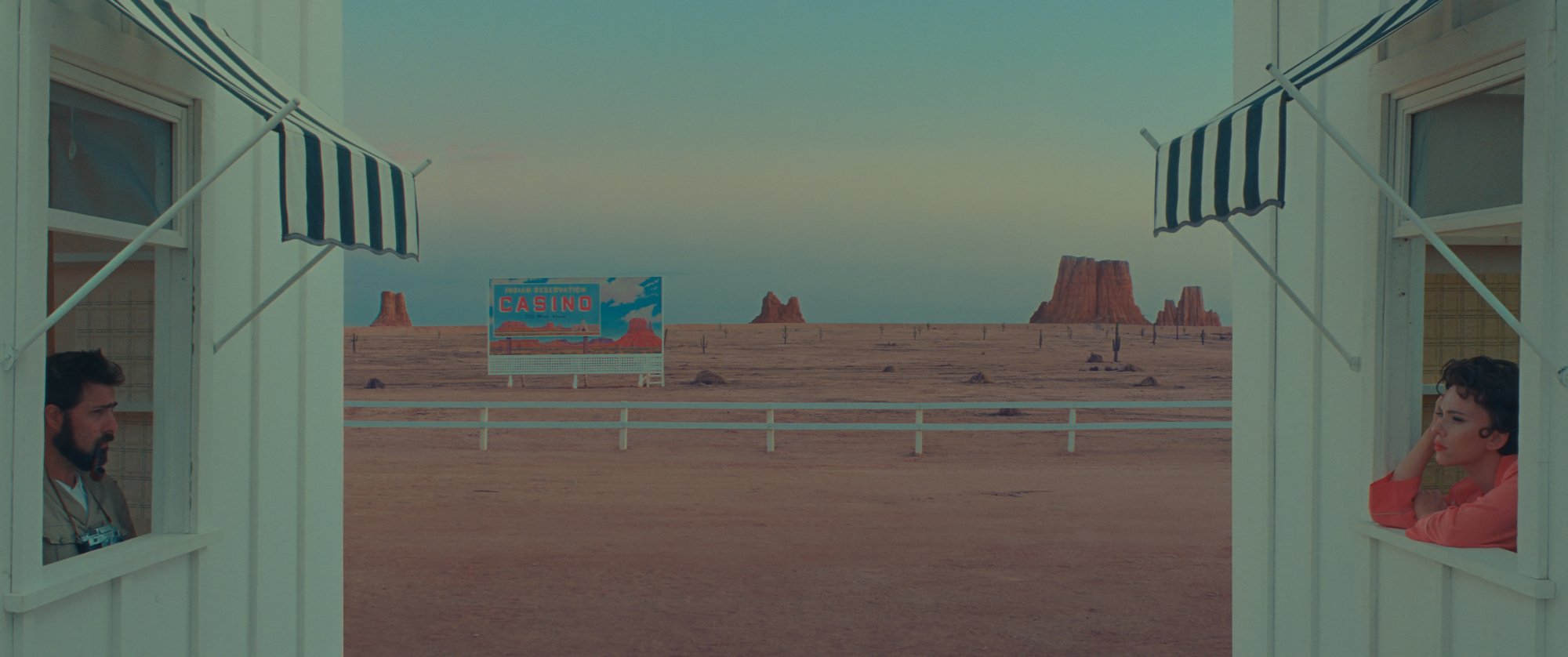
The list goes on and on. Echoes from earlier Wes Anderson movies abound. Augie’s whole arc of matrimonial grief feels like a new riff on Ben Stiller’s in The Royal Tenenbaums, with Augie’s three identical-ish daughters an expansion of Stiller’s two identical-ish sons. The romance between Augie’s son Woodrow (Jake Ryan) and Midge’s daughter Dinah (Grace Edwards) seems to be a mirror of Moonrise Kingdom – not to mention Augie and Midge’s own romance that’s happening five feet away from them. And there is Tilda Swinton over there in another one of her eccentric wigs, as she has been four other times before under Anderson’s direction alone (she cannot resist a wig).
It’s as if the characters of Wes Anderson’s world just keep piling up. His casts get more and more crowded, the worlds become more and more fabricated, and the themes and characterizations more and more abbreviated. The interlinked stories of The French Dispatch are all ruminating on the same themes. The Grand Budapest Hotel is overrun with wild characters. There are entire islands of dogs and fantastic foxes, for goodness sake.
And meaning grows ever more elusive. More confused and distant. The remnants of the stars we gaze up at are just ugly little rocks once we’re able to hold them in our hands. The alien comes down and marks the asteroid in indecipherable symbols – to what end? How do we all end up ashes in a Tupperware container buried beside the communal showers of a roadside motel?
Midway through the third act, Augie walks off stage through a door in the wall of the asteroid crater because he can’t comprehend why the character of Augie behaves the way he does. Here Schwartzman shifts into another character, an actor named Jones Hall who’s playing Augie — and he demands answers. But the playwright is now dead and the director can’t satisfy him. It takes Jones Hall bumping into the actress (Margot Robbie) that was going to play his wife, who was cut from the play, reciting a dream sequence, which was cut from the play, to fill in some holes. Meaning was quite literally left laying on the cutting room floor. Existence is an out-take.
So, what does all of this meta sound and fury signify?
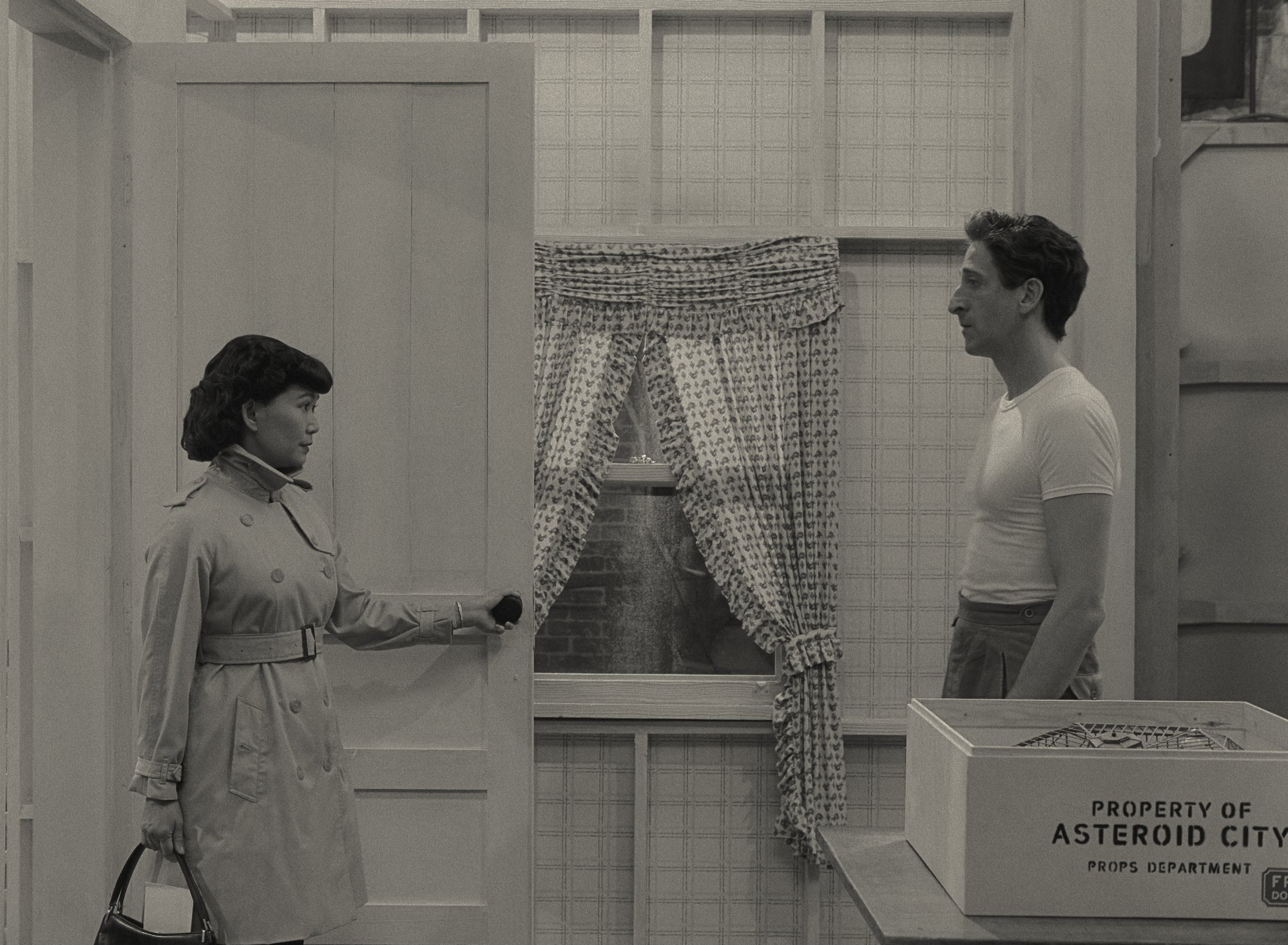
When it’s revealed in act three that the playwright Conrad Earp has died, the film flashes back to a scene from earlier, where a group of actors (including most of the ones who will end up cast in his play) are acting out what it means to sleep. Conrad wanted to capture what it means to dream, and the entire cast begins to chant “You can’t dream if you don’t fall asleep” over and over again. The alien (who is now portrayed by Jeff Goldblum in an alien costume, because of course) holds the asteroid toward the camera as the cast dances around him, chanting and chanting, and the camera pulls in all the way upon the rock. “You can’t dream if you don’t fall asleep.”
In a film full of sharp turns, this scene remains the sharpest. It feels like the final, frenetic moments of All That Jazz in its embrace of cacophonous ecstasy. Is this Conrad Earp’s death dream? Or are we watching him as the play’s themes finally come together for him while he writes? Is there a difference? We are watching actors playing actors play-acting sleep inside a flashback of a televised play telling us to let go of ourselves – yes, to sleep perchance to dream.
And aye, there’s the rub. Any logic you might try to apply to this moment telescopes itself not just into outer space, but down into the deepest depths of the human heart and mind at the same moment. Death is creation. From the ashes. Holding the stars in our hands might rob them of their glitter, so why not throw them back up into the sky every chance you get? Take life and make something enormous and beautiful out of it. Project your loved one’s initials onto the Moon. Make a movie, take a photograph, dance, wear a seersucker suit and fancy yourself a fop. Why not leave every moment behind you a bit more magical than you found it?
